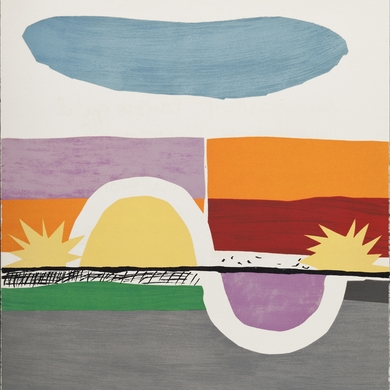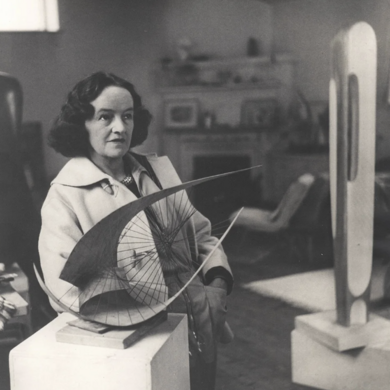Ruth Asawa’s hanging wire sculptures can be seen as sinuous cages holding the aesthetic zephyrs of mid-20th-century art. Biomorphic in shape—curved and bulbed like protozoa, droplets, onions, and the glass beakers in labs—they nod to abstraction and Op art. Their Eastern feeling of restraint suggests Minimalism. And they are craft-y, employing wire-weaving techniques that Asawa learned from Mexican villagers. Asawa was born on a farm in Norwalk, California, in 1926. During W.W. II she was sent with her family to a Japanese Interment Camp, but later held no grudge. After study at Black Mountain College and in Mexico, she began making her looped-wire sculptures, “a shape,” she said, “that was inside and outside at the same time.” These otherworldy creations, which catch the crosscurrents of their time, also speak to a utopian future, a state of grace. Asawa died in 2013, at the age of 87. This exhibition includes more than 300 pieces by Asawa, as well as works by artists with whom she had affinities, such as Josef Albers and Imogene Cunningham. There is a special focus on Asawa’s home and garden as central to her artistic practice. —Laura Jacobs
The Arts Intel Report
Ruth Asawa: Retrospective

Ruth Asawa, Hanging Group of Four, Two-Lobed Forms, 1961.
When
Apr 1–30, 2025
Where
Etc
Photo: © 2025 Ruth Asawa Lanier, Inc



